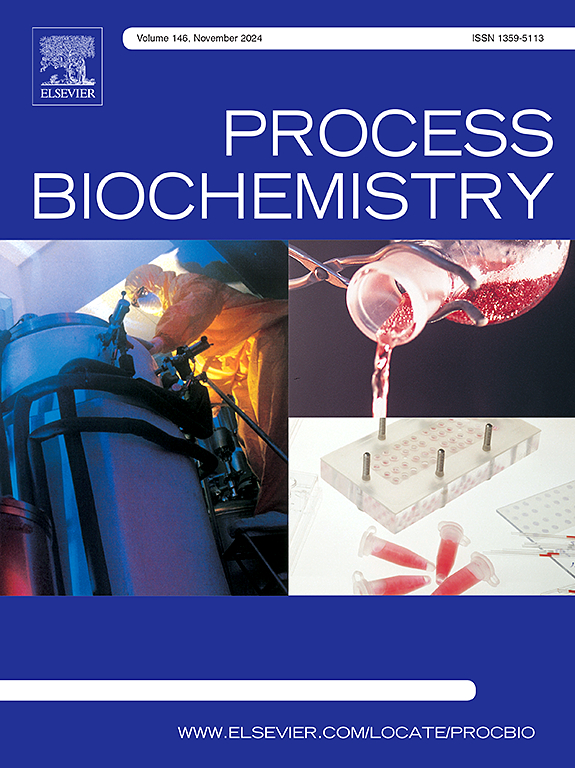A novel dual-function biomimetic approach for high throughput organic dye biodegradation and hydrogen peroxide sensing using a nanosized artificial peroxidase with ultra-improved substrate affinity and superb catalytic efficiency
IF 3.7
3区 生物学
Q2 BIOCHEMISTRY & MOLECULAR BIOLOGY
引用次数: 0
Abstract
A high throughput novel dual-function biomimetic artificial enzyme-based approach was developed for dye biodegradation and hydrogen peroxide quantification using a nanosized artificial peroxidase with superb catalytic efficiency and ultra-improved substrate affinity compared to the native enzyme. The artificial peroxidase was chemically, kinetically, and biochemically characterized. A high specific activity of 0.0503 UI mg−1, an optimal-pH of 4.0, an optimal-temperature of 35 ℃, and a high storage stability for at-least 30 days was determined for this nanozyme. It retained 88.2 % and 90 % of its activity at 60 ℃ (200 min) and 5 cycles, respectively, revealing its high thermal and cycling stability. Its catalytic efficiency and substrate affinity were 3.2-fold and 7.1-order higher than the native peroxidase, respectively. The mechanistic insights were provided for the activity of nanozyme. A dye biodegrading protocol with a yield of 99.1 % (75.2 % after 10 reuses) within 30.0 min was developed and applied for dye degradation from real waters and textile wastewater. An analytical highly sensitive, reproducible, and selective H2O2 biosensor was also designed, providing a linear quantification range over 1.0–180.0 µM, a detection limit of 0.23 µM, and accurate results for milk analysis. This method showed very better figures of merits than reported ones.
求助全文
约1分钟内获得全文
求助全文
来源期刊

Process Biochemistry
生物-工程:化工
CiteScore
8.30
自引率
4.50%
发文量
374
审稿时长
53 days
期刊介绍:
Process Biochemistry is an application-orientated research journal devoted to reporting advances with originality and novelty, in the science and technology of the processes involving bioactive molecules and living organisms. These processes concern the production of useful metabolites or materials, or the removal of toxic compounds using tools and methods of current biology and engineering. Its main areas of interest include novel bioprocesses and enabling technologies (such as nanobiotechnology, tissue engineering, directed evolution, metabolic engineering, systems biology, and synthetic biology) applicable in food (nutraceutical), healthcare (medical, pharmaceutical, cosmetic), energy (biofuels), environmental, and biorefinery industries and their underlying biological and engineering principles.
 求助内容:
求助内容: 应助结果提醒方式:
应助结果提醒方式:


